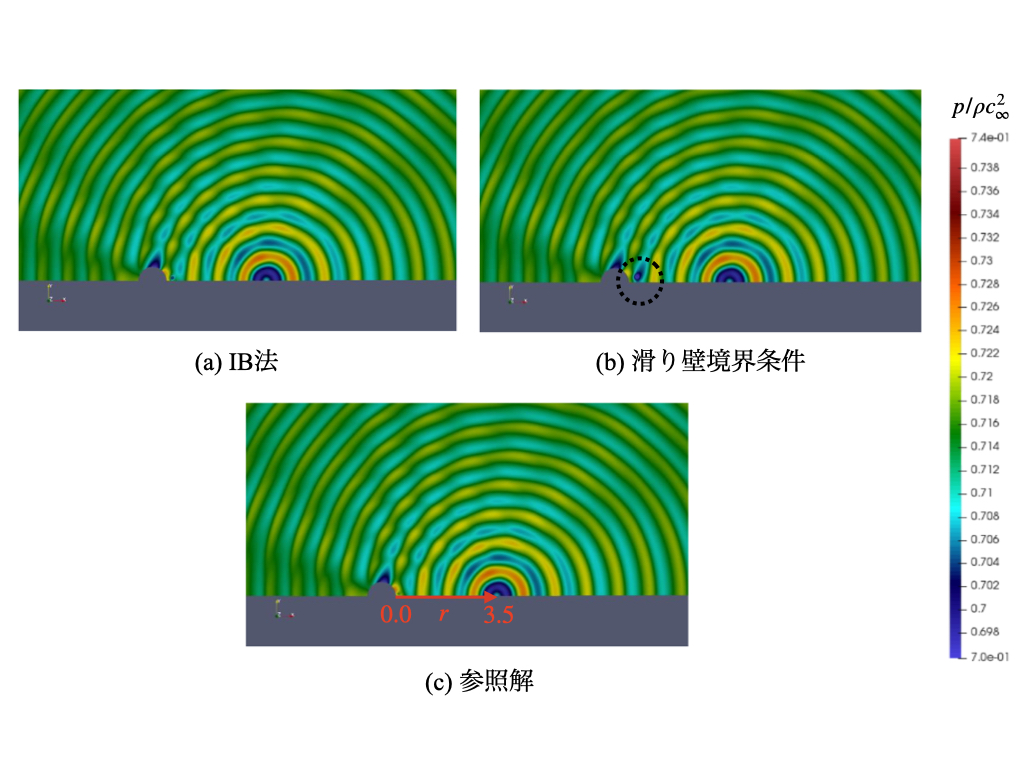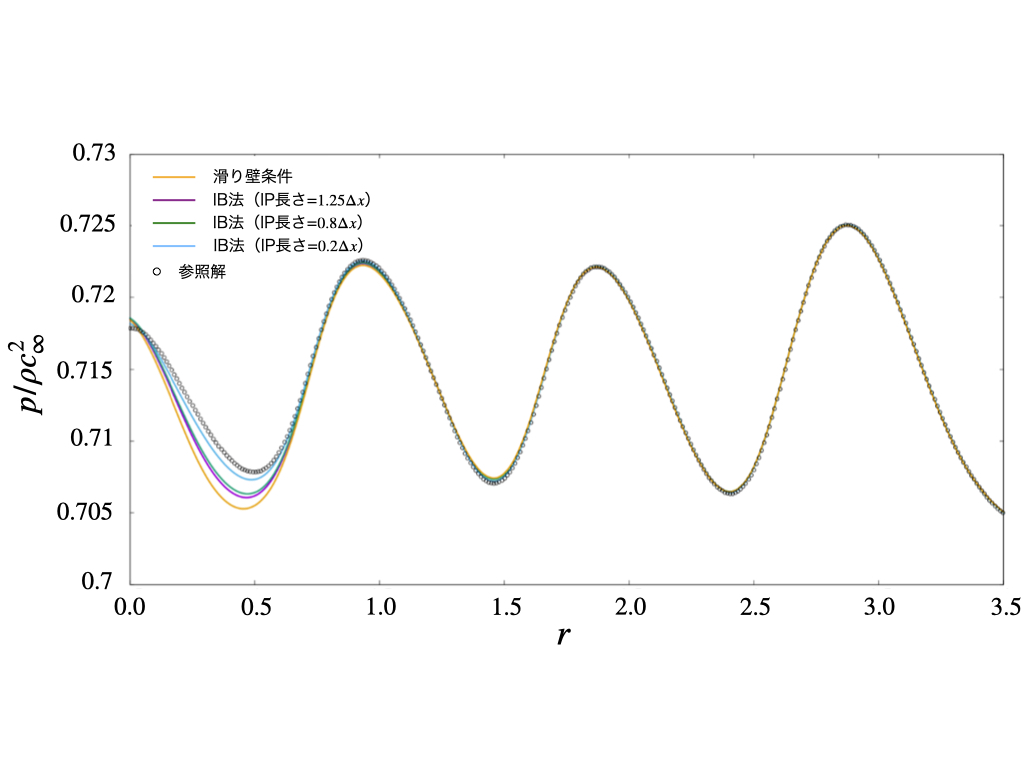Study of high-order unstructured mesh methods for LES around complicated geometries.
JAXA Supercomputer System Annual Report February 2021-January 2022
Report Number: R21EACA38
Subject Category: JSS Inter-University Research
- Responsible Representative: Hiroyuki Asada, Depatment of Aerospace Engineering, Tohoku University
- Contact Information: Hiroyuki Asada(h.asada@tohoku.ac.jp)
- Members: Hiroyuki Asada, Keigo Miyazaki
Abstract
The main objective of this study is to develop a solver based on the discontinuous Galerkin (DG) method to realize high-fidelity large-eddy simulation (LES) of high Reynolds number flows around complicated geometries
Reference URL
N/A
Reasons and benefits of using JAXA Supercomputer System
LES using the DG method requires the high number of computational cells, and thus massively parallel computing with a super computer is necessary. Additionally, the DG method is suitable for the massively parallel computations because of high execution efficiency on the super computer.
Achievements of the Year
This study develops the method to improve the wall-boundary representation which is deteriorated by the coarse computational mesh with high-order DG methods. The developed method is based on the immersed boundary (IB) method widely employed in the non-body-fitted Cartesian mesh methods. In the IB method, the image point (IP) is installed in the wall-normal direction from the cell interface, and the variables at IP are used to obtain the variables at the cell interface (face center, FC) where the boundary condition is imposed. For the traditional non-body-fitted Cartesian mesh, FC is located between IP and the real wall boundary. On the other hand, for the coarse body-fitted mesh, FC is located inside the real wall boundary. Therefore, the variables at FC are obtained by extrapolation. Additionally, since the high-order DG methods reconstruct distributions of variables in each computational cell, the variables at IP are computed by these reconstructed distributions. Figure 1 shows simulations of acoustic-wave propagation around a cylinder obtained by the IB method and traditional slip-wall boundary condition (inviscid flow, Mach number of 0.1). The spatial discretization is performed by the fourth-order DG method. The computational mesh is sufficiently fine (64x128), while the wall representation is reduced as a hexadecagon to investigate the effects of the developed IB method on the reduced wall representation. The length between IP and FC is 0.2dx, and the reference solution is obtained by the same computational mesh with the wall representation of hexacontatetragon and the slip-wall condition. When the slip-wall condition is used (see Fig.1 (a)), the low-pressure region is observed at the region between the acoustic source and the cylinder, which is not generated in the reference solution (see Fig.1 (c)). This low-pressure region may be the effect of the poor wall representation. On the other hand, when the IB method is employed (see Fig.1 (b)), such unphysical low-pressure region is not observed, which demonstrates the improved solution by the IB method. Figure 2 shows the pressure distribution at the region between the acoustic source and the cylinder. The horizontal axis is the distance from the cylinder surface, as shown in Fig.1 (c), and the various conditions of IP length are compared. Clear differences are observed near the cylinder surface, and all conditions of IP length give better agreement with the reference solution than the slip-wall condition. Particularly, the IP length of 0.2dx significantly improves the solution, which means the wall-representation is enhanced. Note that, although it is well known that the IP length needs to be larger than the 2sqrt(2)dx, the present IB method with the high-order DG method treats the short IP length by utilizing the variable distributions in each computational cell.
Publications
N/A
Usage of JSS
Computational Information
- Process Parallelization Methods: MPI
- Thread Parallelization Methods: N/A
- Number of Processes: 16
- Elapsed Time per Case: 5 Hour(s)
JSS3 Resources Used
Fraction of Usage in Total Resources*1(%): 0.03
Details
Please refer to System Configuration of JSS3 for the system configuration and major specifications of JSS3.
| System Name | CPU Resources Used(Core x Hours) | Fraction of Usage*2(%) |
|---|---|---|
| TOKI-SORA | 651497.31 | 0.03 |
| TOKI-ST | 0.00 | 0.00 |
| TOKI-GP | 0.00 | 0.00 |
| TOKI-XM | 0.00 | 0.00 |
| TOKI-LM | 0.00 | 0.00 |
| TOKI-TST | 0.00 | 0.00 |
| TOKI-TGP | 0.00 | 0.00 |
| TOKI-TLM | 0.00 | 0.00 |
| File System Name | Storage Assigned(GiB) | Fraction of Usage*2(%) |
|---|---|---|
| /home | 135.00 | 0.13 |
| /data and /data2 | 7600.00 | 0.08 |
| /ssd | 1375.00 | 0.36 |
| Archiver Name | Storage Used(TiB) | Fraction of Usage*2(%) |
|---|---|---|
| J-SPACE | 0.00 | 0.00 |
*1: Fraction of Usage in Total Resources: Weighted average of three resource types (Computing, File System, and Archiver).
*2: Fraction of Usage:Percentage of usage relative to each resource used in one year.
ISV Software Licenses Used
| ISV Software Licenses Used(Hours) | Fraction of Usage*2(%) | |
|---|---|---|
| ISV Software Licenses(Total) | 246.57 | 0.17 |
*2: Fraction of Usage:Percentage of usage relative to each resource used in one year.
JAXA Supercomputer System Annual Report February 2021-January 2022




